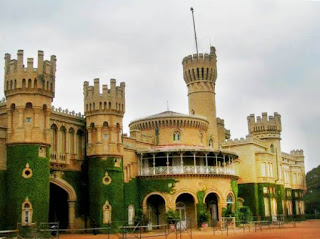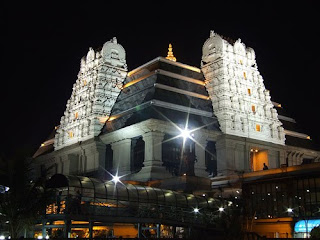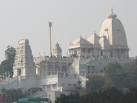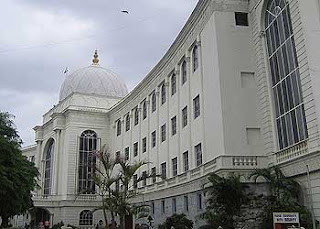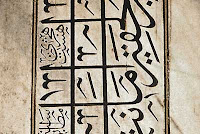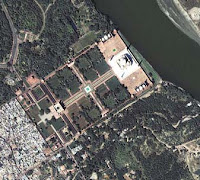Bangalore, India is considered in one of the very beautiful and hi-tech city of the India. Bangalore (India) is the capital city of Karnataka.
In the hot Bangalore news: recently former Chief Minister of Bangalore announced that the name of the Bangalore will be reverted to "
Bengalooru". Bangalore is the India's third most populous and largest city and Bangalore (India) is also the 27th largest city in the world and this Bangalore city India is situated in the south-eastern part of Karnataka. Bangalore in India is also considered in among one of the most happening city of India. In Bangalore (India) you can easily find all the hi tech trends and developed societies.
The Information Technology sector is booming in the city, India. And the Sotware Industry is growing very rapidly in the city in India.
Here are some of the
travel destinations of Bangalore
VIDHANA SOUDHA
A magnificent building housing the State Legislature and Secretariat, it was conceived and executed by Kengal Hanumanthaiya, the then Chief Minister, in 1956. It is built entirely of Bangalore granite in the Neo-Dravidian style.
ATHARA KACHERI
This elegant two-storeyed building is directly opposite the Vidhana Soudha. It houses the State High Court. Within walking distance are the Public Library, the Government Museum , the Vishveshwarayya Industrial and Technological Museum and the Venkatappa Art Gallery .
BANGALORE PALACE
Inspired by the Windsor Castle , this palace was built in the Tudor style by a wodeyar King in 1857.
THE LALBAGH
Started by Hyder Ali in 1760 and later completed by Tippu Sultan, this 240 acre landscape park is home to some very rare species of plants. The glass house, inspired by the Crystal Palace in London , is the venue for the bi-annual flower shows.
ISKCON TEMPLE
Built at a cost of Rs.32 crores on a sprawling 7-acre plot, atop the Hare Krishna hill, is a pious blend of modern technology and spiritual harmony.
Infosys Campus
It is one of India 's largest IT companies with over 91,187 professionals, nine development centers in India and over 30 offices worldwide.
Shiva Statue
Gigantic statue of Lord Shiva on the Bangalore Airport Road .
A visit to these shrines is a proof enough that certain traditions and values remain timeless in a fast-changing world,65 ft. high depiction of Lord Shiva seated in Lotus position. Backdrop of Mount Kailash with Ganga flowing from matted rocks. The statue looks majestic during the night with its lighting
UB City
UB City is the biggest commercial property project inbangalore,UB City has four towers namely, UB Tower(19 Floors), Comet(11 Floors), Canberra (17 Floors) and Concorde(19 Floors). The later three towers are all named after aircrafts.
Hebbal Flyover – Engineering Wonder – One of India's largest flyovers – 8.5km
Utility Building
The Public Utility building situated on Mahatma Gandhi Road is an all in one shopping complex.It has 24 floors. The entire scenic beauty of Bangalore can be viewed from the top floor. It houses a variety of business centres like handicrafts, jewellery, garments, hotels, resturants and many more on the ground floor and first floor. It has a theatre on the second floor and a hotel on its 24th floor to boast off.
Electronic City
Largest Technology Park in Asia employing more than 1 lakh people.
Fast Facts:
Bangalore was the first city in India to receive electricity in India .
Bangalore has produced the highest number of professionals in USA almost 60% of the Indian population abroad is from Bangalore
Bangalore has produced the maximum number of scientists considered for Nobel Prize nominations (from India).
Bangalore has the richest(HNI) people in India . The line of poverty is the least of all cities of the world.
Bangalore has produced the maximum International Sports persons in India for all sports ahead of even Mumbai & Delhi.
Bangalore is rated one of the Cleanest cities in India .
Bangalore is considered the Fashion Capital of East comparable to Paris .
Bangalore University has highest number of students going Abroad for higher studies taking the first place from IIT-Kanpur.
Bangalore has highest number of Public sectors and Government organizations in India . Bangalore is the only city in the world to have commercial and defence airport operating from the same strip , till recently.
Bangalore University has 57 Engineering Colleges affiliated to it, which is highest in the world.
Bangalore has 21 engineering colleges, which is highest in the world in any given city.
Bangalore has the highest number of software companies in India , Hence called the Silicon Valley of India .
Bangalore has the highest number of software professionals in the world taking the
first place from Osaka, Japan .
Bangalore was founded in 2nd Century and still has the same infrastructure drainage & sanitary systems - the oldest in the world.
Bangalore has the highest number of 2-wheelers in the world
Bangalore is the only city in India with maximum number of temples, mosques, churches & gurdwaras.
IT firms in Bangalore employ about 35% of India 's pool of 10 lakh (1 million) IT professionals. Bangalore accounts for the highest IT-related exports in the country.
Bangalore has the impeccable record of highest growth in 20 years












